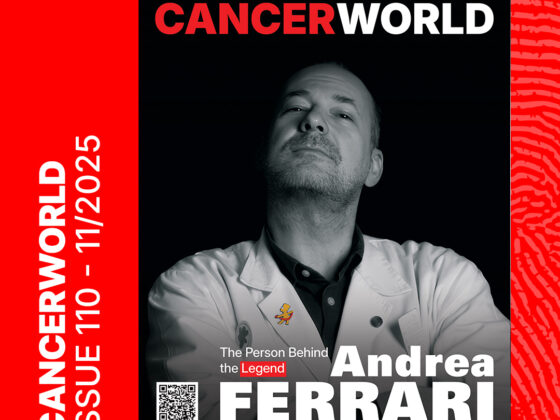In 2015, cancer researcher Anil Potti – back then associated with Duke University in Durham, North Carolina – was found guilty of research misconduct by a US federal investigation led by the office for research integrity of the Department of health and human services. “The findings bring to a close one of the most egregious U.S. scientific misconduct cases in recent years” wrote Science magazine.
The episodes of misconduct listed by the office for research integrity included faking research data in research reports from six different NIH grants, swelling the number of patients involved, altering scan results and data sets, or reporting predictors and/or their validation by disregarding accepted scientific methodology so that false data were reported in eleven now-retracted papers, science journalist and watchdog of research integrity Ivan Oransky reported in his blog Retraction Watch, that he launched with friend and colleague Adam Marcus with no clear plan: “we had a lot of good stories” he says in an interview with CancerWorld in his office in New York.
Now, Retraction Watch is much more that a blog launched and updated as a past-time:it has become a freely available, comprehensive database including nearly 21,000 retractions, “compared to just over half that on sites like Scopus” Oransky says. “Nothing like this exists because no one has been cataloguing retractions so effectively”.
Retraction Watch is much more that a blog. It’s a freely available, comprehensive database including nearly 21,000 retractions
Not a death penalty, but…
Retractions were called by Science magazine “science publishing’s death penalty”: “Because a retraction is often considered an indication of wrongdoing, many researchers are understandably sensitive when one of their papers is questioned. That stigma, however, might be leading to practices that undermine efforts to protect the integrity of the scientific literature”, the authors wrote. Stigma can be a problem for those who want to invite scientists to actively suggest a retraction when they realize that something went wrong with their works.
“Negative retraction stigmatization has mainly been borne by authors, whereas journals and publishers, except for headline-grabbing reports, have thus far largely avoided this stigma” writes Jaime Teixeira da Silva in a paper published on Research Ethics on April 2019. “One of the efforts to destigmatize retractions, at least those for honest errors, has been to try to relabel or rebrand retractions. The terms ‘self-retraction’, ‘amendment’, ‘publisher-caused error’, and others have emerged, but such a diverse lexicon may complicate the publishing landscape more than it resolves the stigma” said the expert. “Seeking euphemistic terms to represent a truth within a toxic context of negative stigmatization only politicizes the issue, and does not resolve it. A change is needed in the culture within the biomedical community, to acceptance of critique, and that the culture of shaming needs to be halted in order to achieve this. Only then can academics assume greater responsibility, without the risk of being shamed, of retracting their faulty literature, ‘honestly’, when they feel that this is needed”.
Oransky has now become an expert in this peculiar field of research, and was initially driven by curiosity: “There are a lot of hidden stories, just sitting out there, and not being paid attention”. The other factor that attracted his interest is that the short texts accompanying retractions are “often very unclear or actually wrong”. That’s why at some point he decided to invite his students of science journalism at the Columbia University to collect as many details as possible on each cryptic retraction notice: “There was a transparency problem. No one likes to admit mistakes”, he argues.
Cancer kills, bad science does too
Why should oncology researchers, cancer practitioners, and patients know more about retractions? “People have the right to know because it can affect not only science but also patient care. If researchers are committing misconduct or fraud, taxpayers and patients who are participating in related clinical trials have to be aware of that. Most papers that should be retracted are not. This is not merely an academic issue, it affects patients”, Oransky explains.
Of course in an academic world dominated by the “publish or perish” mantra, in which every published paper might contribute to professional success such as a promotion or tenure, and can bring significant research funding, challenging a paper means for many researchers a threat for their career. “If you have to retract a paper, that will appear in your curriculum forever and it will be seen as something negative” Oransky explains.
In fact, retractions should be seen as a good thing, he says. “It’s actually proven that you become more trustworthy if you do that. Contrary to what might be expected, “actually nothing bad is likely to happen when you retract a paper for a honest error and are clear about that”, he assures.
In an academic world dominated by the “publish or perish” mantra, challenging a paper means for many researchers a threat for their career
When the Nobel laureate said “Oops”
After many years of denial, some researchers are now moving to this proactive approach: “For my first work-related tweet of 2020, I am totally bummed to announce that we have retracted last year’s paper on enzymatic synthesis of beta-lactams. The work has not been reproducible” this candid confession was published on Twitter on January 2, 2020, by Frances Arnold, who was awarded the Nobel Prize in Chemistry in 2018.
For my first work-related tweet of 2020, I am totally bummed to announce that we have retracted last year’s paper on enzymatic synthesis of beta-lactams. The work has not been reproducible. https://t.co/Dk1TFw0FY9
— Frances Arnold (@francesarnold) January 2, 2020
The reaction in the twittersphere was overwhelmingly positive: “You should not be bummed but just proud for taking action. Thank you for keeping the literature records accurate” summarised one of the comments. “Thank you for providing a role model for scientific integrity! It’s so scary to be honest, seeing inspiring people lead the way in honesty helps me stay strong when I need to” added another scientist.
When it comes to cancer research, acting more or less promptly can have reflexes in treatments administered, like CAR-T, as it was the case with a paper that was retracted from Nature in early 2019 after many clinicians had started to feel excited about it. It was a mouse study about a system targeting therapeutic T-cells to brain cancer, showing a new way to deliver (CAR) T across the blood-brain barrier to treat brain tumours.
From Nature to the New England Journal of Medicine
“A multi-institution international team led by researchers at Baylor College of Medicine has developed a new strategy to overcome one of the main obstacles in the treatment of brain cancer – access to the tumour”, read the press release that promoted the results in the popular media, published in September 2018. According to the retraction notice, the paper had issues with figure presentation and underlying data, and the authors couldn’t confirm the results.
Cleaning the record on Nature magazine, in this case, was not enough, since the unreliable paper had been also included in a review that appeared in the New England Journal of Medicine. Needless to say, the review had to be retracted as well, not to contribute to further misinformation. Of course there is no way to know how many researchers and clinicians read about the study and then missed the news of the retraction.
Research on osteosarcoma, the most frequent primary bone tumour in children and adolescents, was also affected when a paper published in Carcinogenesis in April 2018 was retracted in February 2019. The authors claimed that their research with a mouse xenograft tumour model confirmed the discovery of a new inhibitor of the proliferation, migration, and invasion of human osteosarcoma cells, called A005, which they claimed had stopped tumour growth and prevented osteosarcoma-associated osteolysis. “These findings indicated that A005 may be a promising candidate drug for the treatment of human osteosarcoma”, the now retracted paper said.
The reasons for the retraction were concerns about data and duplication of images that led to unreliable results. “The results and conclusions of the study cannot be confirmed, and the authors wish to withdraw the paper completely so as to correct the publication record”, the retraction note says.
There is no way to know how many researchers and clinicians read about a study and then miss the news of the retraction.
Speak now, or forever risk your reputation
Sometimes retractions are caused by minor problems, that may not appear to compromise the validity of conclusions. In this case patients are less likely to be affected. Still, the impact on researchers reputations can be significant if they have not been proactively forthcoming about the mistakes. This was the case of Carlos López-Otín, a prestigious Spanish researcher who insisted that he was being the subject of a witch-hunt after eight nine of his papers were withdrawn from the Journal of Biological Chemistry.
The papers – published between 2000 and 2007 – were related to the identification of new human genes involved in cancer or other diseases. The retractions were caused by manipulation or duplication of images, or the reuse of the same experiments from previous papers. Similar problems led to a later self-retraction of a study published in Nature Cell Biology a few days after the journal had issued an expression of concern about it. A few months later, Nature withdrew a 2017 mentoring prize to Carlos López-Otín.
López-Otín and the other authors of the paper argue that the reasons for the retractions are “very minor” formal errors, and that other independent groups have validated their results afterwards, as reported in an article in the Spanish daily El País.
A systematic database of retractions is in the making
In 2019 Retraction Watch has documented 36 retractions in oncology: “We have about 1,500 retractions per year out of about two million papers in total” Oransky says. “If you visit PubMed, Medline, the web of Science or Scopus you can search for retractions but their archives are not systematic and a lot of what you find is actually many false positives. Also, not everything is in any of them”, he says.
The systematic work that led to the database constantly updated by RetractionWatch was made possible by a substantial grant offered by a private foundation, and of course by the endless curiosity that pushes Oransky and his colleagues ask annoying questions: “We have to question what we read, to be able to trust what we read”.
Cancer research that smelled fishy
A recent retraction (January 2020) affects a paper on non-small cell lung carcinoma (NSCLC) patients published in 2015 in Human Immunology. After studying 18 healthy controls and 66 untreated patients with NSCLC, researchers had claimed to have found a subset of cells that “might play an important role in the clinical progression of NSCLC.” However, “serious problems with copied and re-labelled images in several figures” were found, as the editor-in-chief of the journal explains on the retraction notice. “This strongly suggests that the data was manipulated. The authors were unable to provide the raw data files to prove otherwise. This makes the overall conclusions of the paper unreliable and violates our ethical publishing policies,” he adds.
Ethical violations compromised the integrity of a paper published in October 2019 in PLOS ONE. The original paper was published in January 2013, targeting glioblastoma (a kind of brain cancer). The authors said they had been able to identify a way to suppress cell growth and invasion as well as inducing apoptosis. Their study revealed, “for the first time” two kinds of receptors in the Notch cell signalling system (Notch1 and Notch2) supposedly playing different roles in the biological processes of astrocytic gliomas. But the retraction notice raised concerns “about several results reported in this article”, including issues about data, image duplications and ethical violations by the authors.
Another unreliable paper on glioblastoma was published in ACS Biomaterials Science & Engineering in May 2018. The authors address “glioma stem cells (GSC) as a critical therapeutic challenge for glioblastoma”. But the validity of one of the images was questioned – as the retraction notice explains – and with that the results of the study.
Data concerns caused also the retraction of a research on acute myeloid leukemia published in May 2018 in Haematologica. The authors claimed to have found, on patient-derived mouse xenograft models, a key target for the survival of acute myeloid leukemic stem cells, and a way to inhibit it in patients with a particular mutation (FLT3-ITD+) related to a particularly poor prognosis. They also recommended including the inhibitors in the treatment regime for that kind of acute myeloid leukemia.
In the retraction notice, the authors recognized that there was something wrong with data and images prepared by the first author of the article, but accepted to share the same fate: “While we believe the overall conclusions of our manuscript remain intact, the most appropriate course of action is to retract the paper. All authors have agreed to this Retraction. We deeply regret this circumstance and apologize to the scientific community for the inconvenience that this may have caused”.












